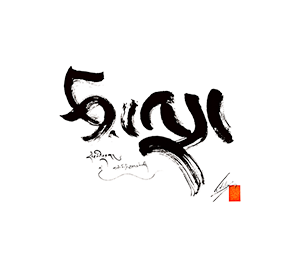Yogācāra
Basic Meaning
Along with Madhyamaka, it was one of the two major philosophical schools of Mahāyāna Buddhism. Founded by Asaṅga and Vasubandhu around the fourth century CE, many of its central tenets have roots in the Saṃdhinirmocanasūtra and the so-called third turning of the dharma wheel (see tridharmacakrapravartana).
| Term Variations | |
|---|---|
| Key Term | Yogācāra |
| Topic Variation | Yogācāra |
| Tibetan | རྣལ་འབྱོར་སྤྱོད་པ་ ( naljor chöpa) |
| Wylie Tibetan Transliteration | rnal 'byor spyod pa ( naljor chöpa) |
| Devanagari Sanskrit | योगाचार |
| Romanized Sanskrit | Yogācāra |
| Chinese | 瑜伽行派 |
| Chinese Pinyin | Yuqiexing pai |
| Japanese | 瑜伽行 |
| Japanese Transliteration | Yugagyō |
| Buddha-nature Site Standard English | Yoga-Practice school |
| Karl Brunnhölzl's English Term | Yoga Practice (Practitioner) |
| Richard Barron's English Term | Yogic Practitioners |
| Ives Waldo's English Term | one who practices yoga |
| Term Information | |
| Source Language | Sanskrit |
| Basic Meaning | Along with Madhyamaka, it was one of the two major philosophical schools of Mahāyāna Buddhism. Founded by Asaṅga and Vasubandhu around the fourth century CE, many of its central tenets have roots in the Saṃdhinirmocanasūtra and the so-called third turning of the dharma wheel (see tridharmacakrapravartana). |
| Term Type | School |
| Definitions | |
| Princeton Dictionary of Buddhism | See pp. 1033–34. In Sanskrit, “Practice of Yoga” ; one of the two major Mahāyāna philosophical schools (along with Madhyamaka) in India, known especially for its doctrines of “mind-only” (cittamātra) or “representation-only” (vijñaptimātratā), the trisvabhāva, and the ālayavijñāna. In addition, much of the exposition of the structure of the Mahāyāna path (mārga) and of the Mahāyāna ABHIDHARMA derives from this school. The texts of the school were widely influential in Tibet and East Asia. |
